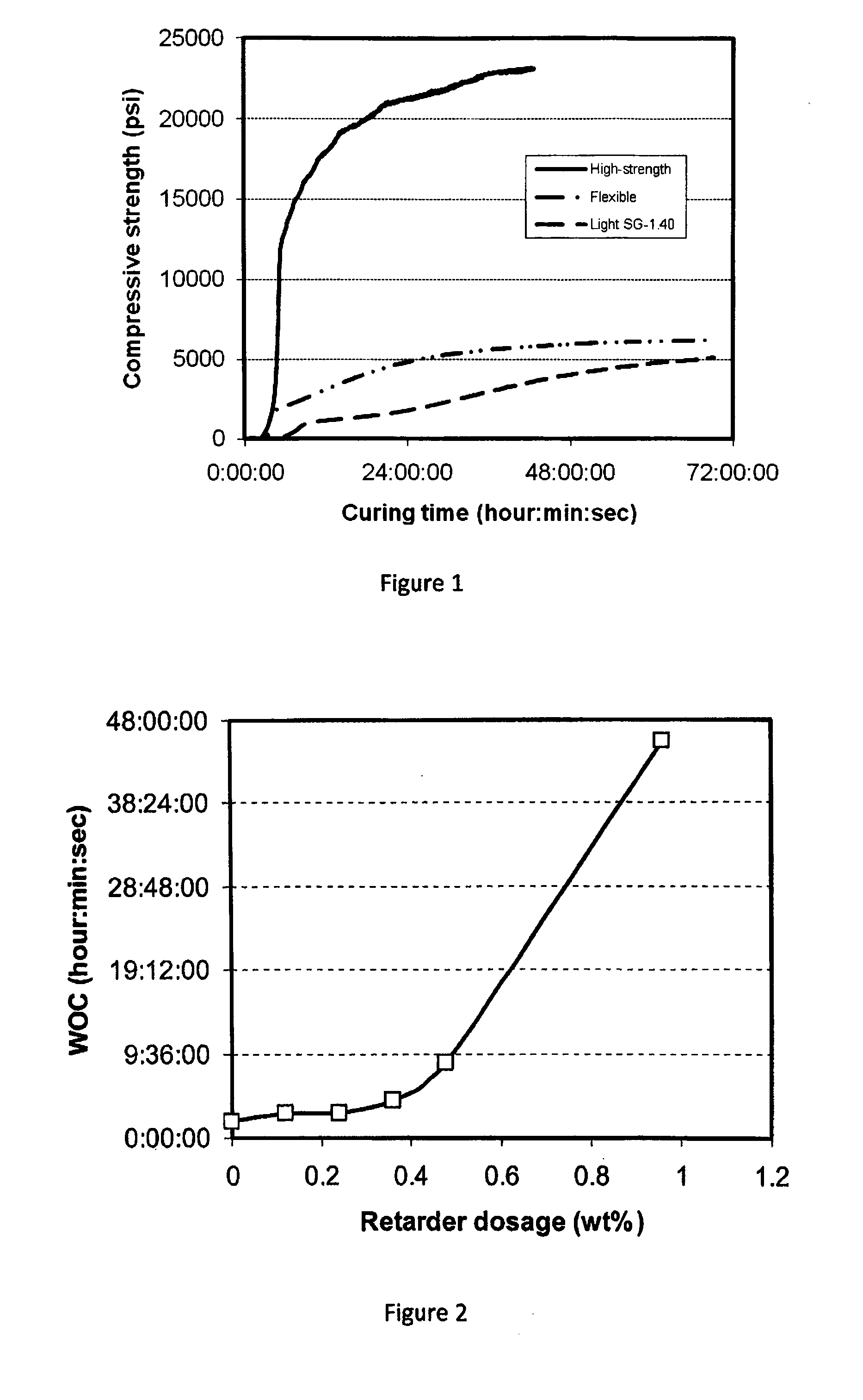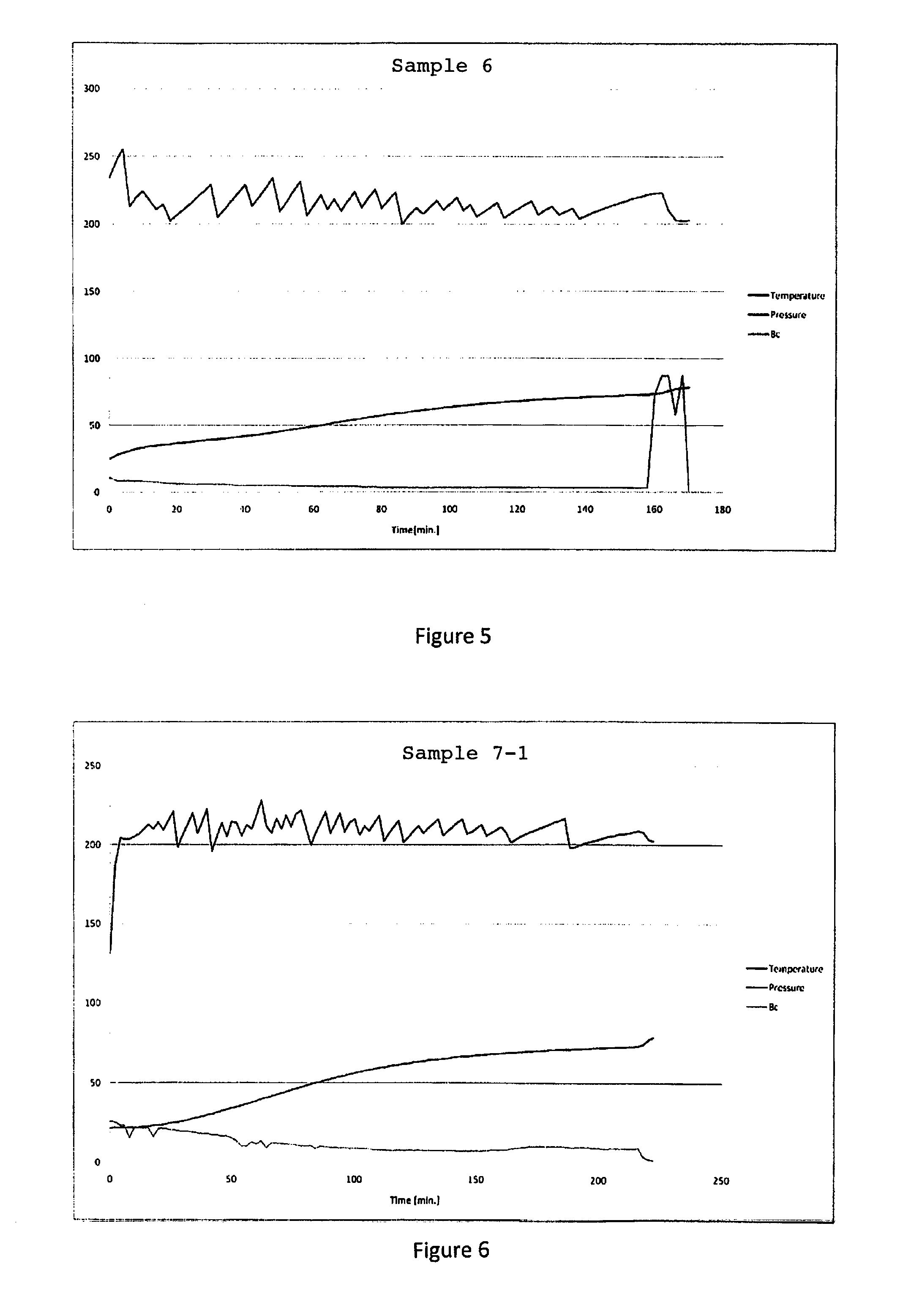Cement composition based on calcium aluminate cement
a technology of calcium aluminate and cement, applied in the field of cement compositions and systems based on calcium aluminate, can solve the problems of large daily costs, continuous and costly 24 hour a day drilling operation, and considerable time-consuming setting process
- Summary
- Abstract
- Description
- Claims
- Application Information
AI Technical Summary
Benefits of technology
Problems solved by technology
Method used
Image
Examples
examples
[0029]Three different types of cement according to the present invention were prepared, one for high strength applications, one for use when a “flexible” cement is needed and one for situations where it is necessary to have a light-weight cement, for example with a specific gravity of 1.46 or less. Examples of each of these three formulations of cements are given in table 1 below.
TABLE 1High-strengthFlexibleLight-weightCalcium Aluminate Cement434340(Secar 71)Microsilica (MS971)292629Silica flour (Sibelco M 10)282212Glass Microsphere (3M-S-60HS)419Rubber powder (Ecorr RNM45)5Dispersant (SHMP)**0.2170.2170.217Retarder (Citric acid)**0.400.400.40Water vol %*323532Green density (g / cm3)2.101.761.40*vol % in total mix**wt % based on the dry mix (cement, Microsilica, silica flour)MS971 from Elkem AS3M-S-60HS from 3M
[0030]Each of the three cements prepared were then tested for their rheological properties including Plastic Viscosity (PV), Yield Point (YP) and flow at different rpm. The ceme...
PUM
| Property | Measurement | Unit |
|---|---|---|
| time | aaaaa | aaaaa |
| temperature | aaaaa | aaaaa |
| temperature | aaaaa | aaaaa |
Abstract
Description
Claims
Application Information
 Login to View More
Login to View More - R&D
- Intellectual Property
- Life Sciences
- Materials
- Tech Scout
- Unparalleled Data Quality
- Higher Quality Content
- 60% Fewer Hallucinations
Browse by: Latest US Patents, China's latest patents, Technical Efficacy Thesaurus, Application Domain, Technology Topic, Popular Technical Reports.
© 2025 PatSnap. All rights reserved.Legal|Privacy policy|Modern Slavery Act Transparency Statement|Sitemap|About US| Contact US: help@patsnap.com



